The highly anticipated Apple Vision Pro is set to hit the U.S. market on February 2, and tech enthusiasts have been eagerly awaiting reviews from the first batch of users and influencers who had the chance to experience it before the official release.
Reviewers praise the display, audio, and Mac Virtual Display feature in the first set of published reviews. However, they also raise concerns about its weight, limited app selection, and the hefty $3,499 price tag.
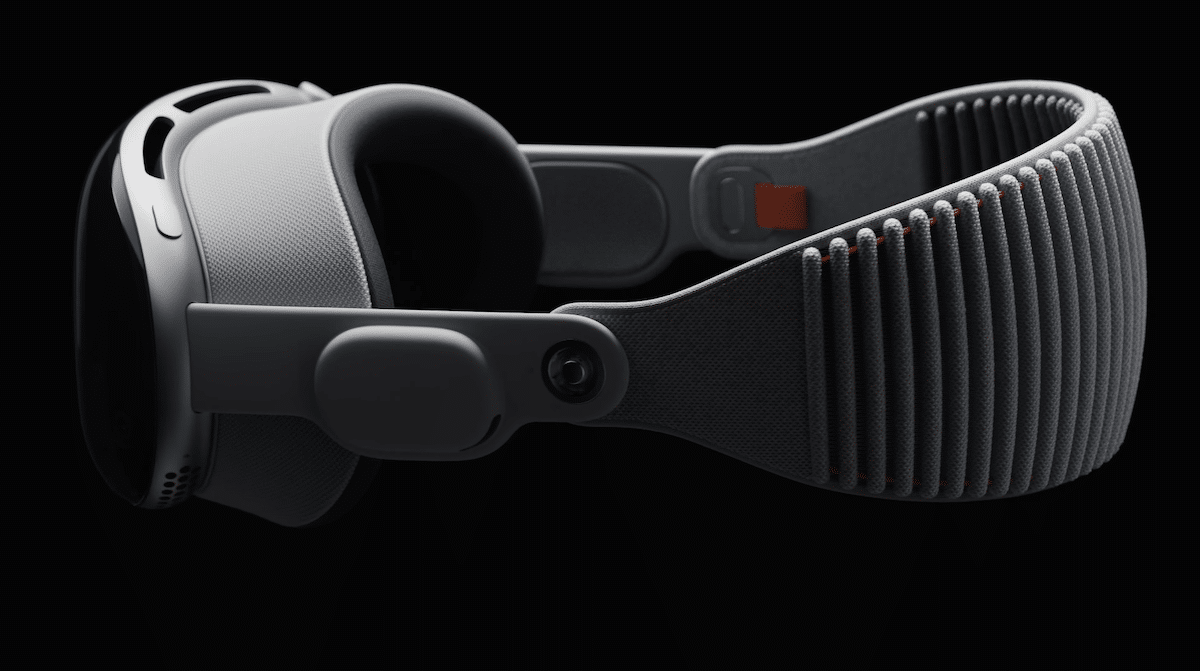
Apple Vision Pro reviews are out!
Battery life and Home Screen
The Apple Vision Pro boasts a claimed battery life of up to two hours, with specific details for 2D video playback reaching 2.5 hours. However, an initial review from YouTuber Brian Tong suggests that real-world usage may exceed Apple’s estimates, potentially lasting up to 30 minutes longer per charge.
The Home Screen, though not customizable like iPhones and iPads, organizes third-party apps alphabetically on the second page, with a limitation on creating folders. Notably, adding websites to the Home Screen via Safari is currently unavailable.
Personas and EyeSight
A distinctive feature of the Vision Pro is the ability to create digital avatars, called Personas, to represent users during video calls. Early reviews express mixed feelings about this feature, with some users finding the avatars less than flattering. The Wall Street Journal’s Joanna Stern described her Persona as “Botox from hell.” EyeSight, the technology displaying a digital recreation of users’ eyes, received criticism for its low resolution and dim appearance.
On FaceTimes with friends and family, the reviews were unanimous: “You look awful,” my sister said. “It’s like Botox from hell,” remarked the always-kind Jason Gay. “Frightening,” said my dad.
Calling other Vision Pro reviewers was slightly better because we all looked ridiculous. But everyone agreed I looked the worst. And this was after I remade my Persona numerous times, with professional lighting.
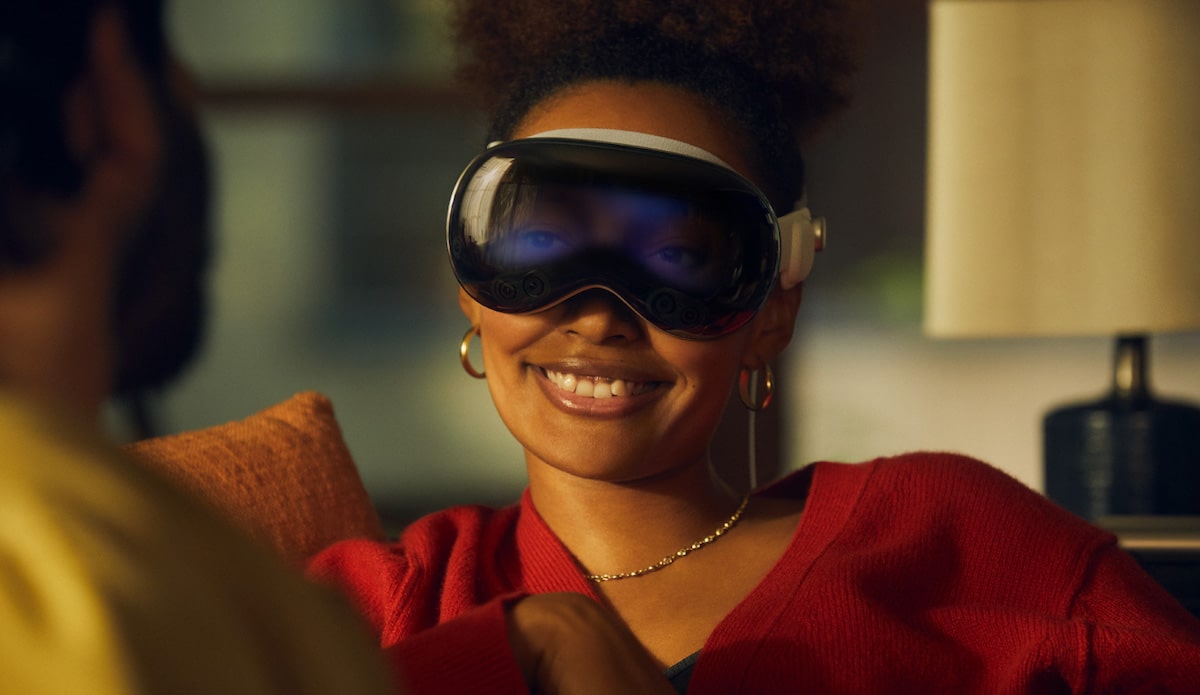
Mac Virtual Display
Reviewers generally praise the Vision Pro’s performance when used as an external display for a Mac. Scott Stein from CNET expressed excitement about the immersive experience of having a floating computer. While acknowledging occasional glitches and a feeling of eye strain when transitioning back to the real world, the overall response to the Mac Virtual Display feature is positive.
Apple only allows one monitor view of your Mac, although it’s a nice big 4K version, and any number of Vision/iOS apps can also float simultaneously around it. I filled my whole area with apps, overlapping them in semitransparent layers. The Mac’s keyboard and trackpad cursor move across the Mac view and into other apps, similar to how Apple has allowed Mac and iPad keyboards to control a nearby Mac and iPad at once.
What if my desk was just floating monitors? What if I didn’t need anything but a headset? Vision Pro gets close to that feeling when all the apps are open and the flow is going. I’m doing that now. I’m in my virtual floating computer as I write this. There are glitches, and sometimes the controls feel too floaty, but in its first form, I’m shocked at how good it already is.
Design and weight
Opinions about the design and weight of the Vision Pro vary among reviewers. Todd Haselton from CNBC appreciates the build quality, describing it as a “premium headset,” while Nilay Patel from The Verge finds the device heavy, comparing it to “an iPad for your face.” Comfort issues, especially during extended use, have been noted, with some reviewers pointing out the headset’s top-heaviness.
From The Verge’s Nilay Patel:
I keep joking that the Vision Pro is an iPad for your face, but it’s heavier than an 11-inch iPad Pro (470 grams) and pushing close to a 12.9-inch iPad Pro (682 grams), so in a very real way, it’s an iPad for your face.
All of the Vision Pro’s heft is totally front-loaded, too. Other big headsets like the Quest Pro (722 grams) have elaborate headbands to balance out their weight, but the Vision Pro just rests it all on the front. Swapping to the dual loop strap helps keep things more stable but doesn’t really reduce the overall sensation of having all that headset on your face. You’re just going to feel it after a while.
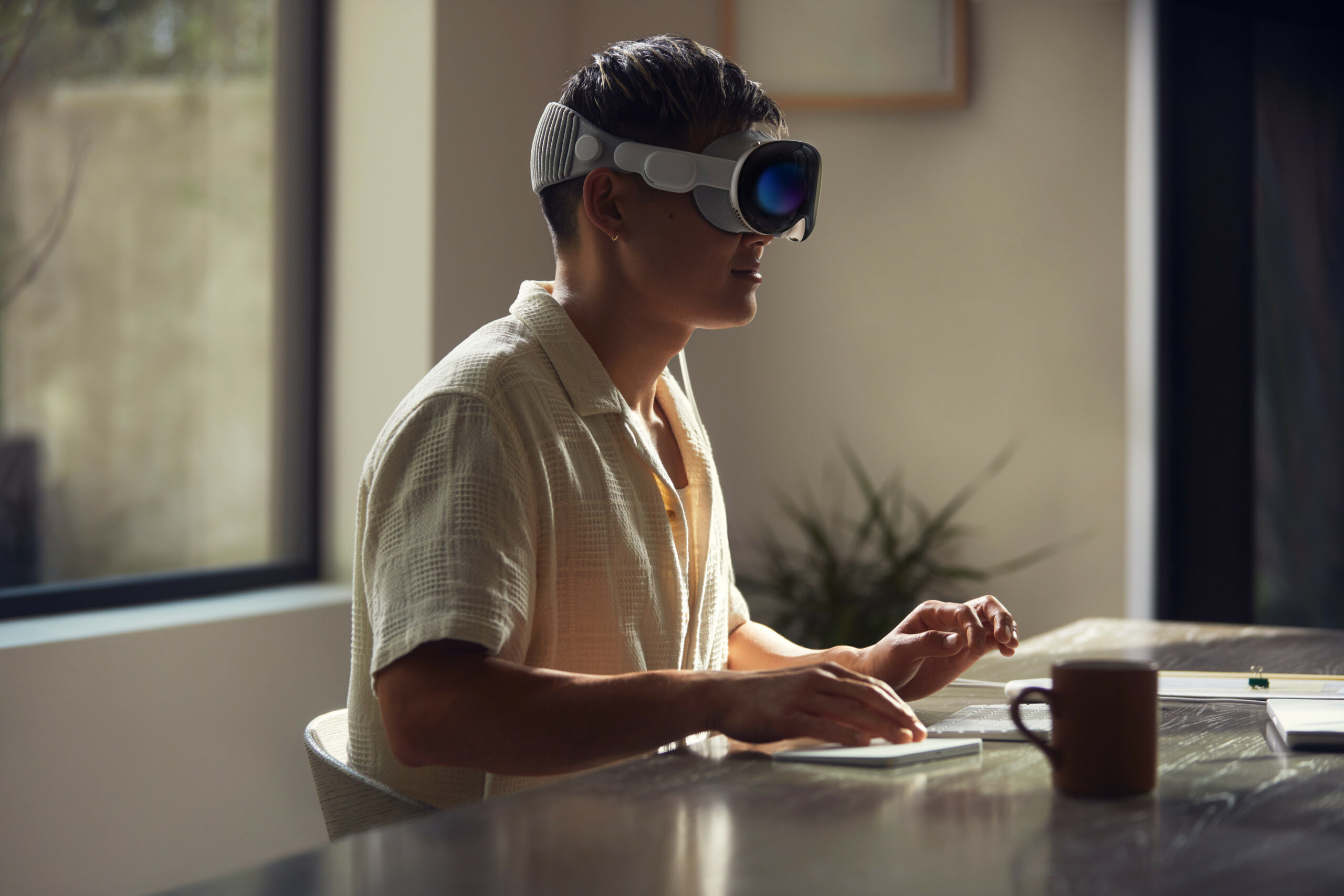
Display and audio quality
The Vision Pro’s display, featuring 4K OLED technology, has received widespread acclaim for its sharpness and brightness. The built-in speakers, which support spatial audio, are praised for delivering an immersive sound experience. However, concerns have been raised about speaker leakage, prompting users to opt for headphones for a more enclosed audio experience. From CNBC’s Todd Haselton:
The built-in speakers are great. They get nice and loud and support spatial audio, so if you turn your head away from the movie in front of you, the sound stays in the same place, much like if you were watching a real TV. Music and movies sounded fantastic, with full surround sound. People can hear the audio coming out of the headset, though, so you’ll want to use AirPods in public.
CNET’s Scott Stein on the display:
The display quality and the finessed interface make the Vision Pro feel like it’s in a whole other class, though. The dual 4K micro-OLED displays, a technology that will make its way to other headsets in the future, are rich, vibrant and way above what competing devices offer. Apple’s hand and eye tracking is always on, and often fantastic (but not always). Also, the Vision Pro requires no room setup at all. The depth mapping and spatial awareness happen invisibly, something I haven’t seen before either.
Interface and controls
Navigating the Vision Pro’s interface has received mixed reviews. While some find it intuitive, others, like CNET’s Scott Stein, note a learning curve and occasional issues with hand and eye tracking responsiveness. The inclusion of an instruction manual suggests a departure from Apple’s usual emphasis on intuitive user interfaces.
Haptics is a missing piece, being able to feel feedback like on a phone or watch or with game controllers. I want more precise controls in 3D space, something fully multifunctional. I’m not sure hand tracking and eye tracking alone can do all of that. Apple already has a haptic response wristband called the Apple Watch, which is starting to get its own gestures with double-tap. There’s an obvious connection there, but Apple hasn’t connected those dots yet.
Augmented reality and applications
The Vision Pro promises mixed reality experiences, including augmented reality. Early reviews suggest a positive response to augmented reality applications, such as culinary experiences. However, concerns have been raised about the limited availability of true AR applications that interact with physical objects in the user’s environment. From the WSJ’s Joanna Stern:
I launched the Crouton app, and placed the Balsamic Mushroom and Sausage Pasta recipe to one side of the kitchen. The ‘wow’ moment came at the stove when I dragged one timer over the boiling pasta and another over the browning mushrooms. They just hovered until time was up.
The lack of AR applications highlighted by The Verge’s Nilay Patel:
One of the weirder things about visionOS (and the Vision Pro itself, really) is that there’s not a lot of true AR in the mix — as in, actual interaction between physical objects in your space and digital ones.
After all these years of Apple talking about AR, I counted exactly three things in my entire time with the Vision Pro that offered a preview of the AR future. One: when you look at your Mac, the Vision Pro sometimes puts up a “connect display” button above it that starts screen sharing. Two: when you’re typing on a Bluetooth keyboard and look down at your hands, it puts a little text preview window above the keyboard so you can see what you’re typing.
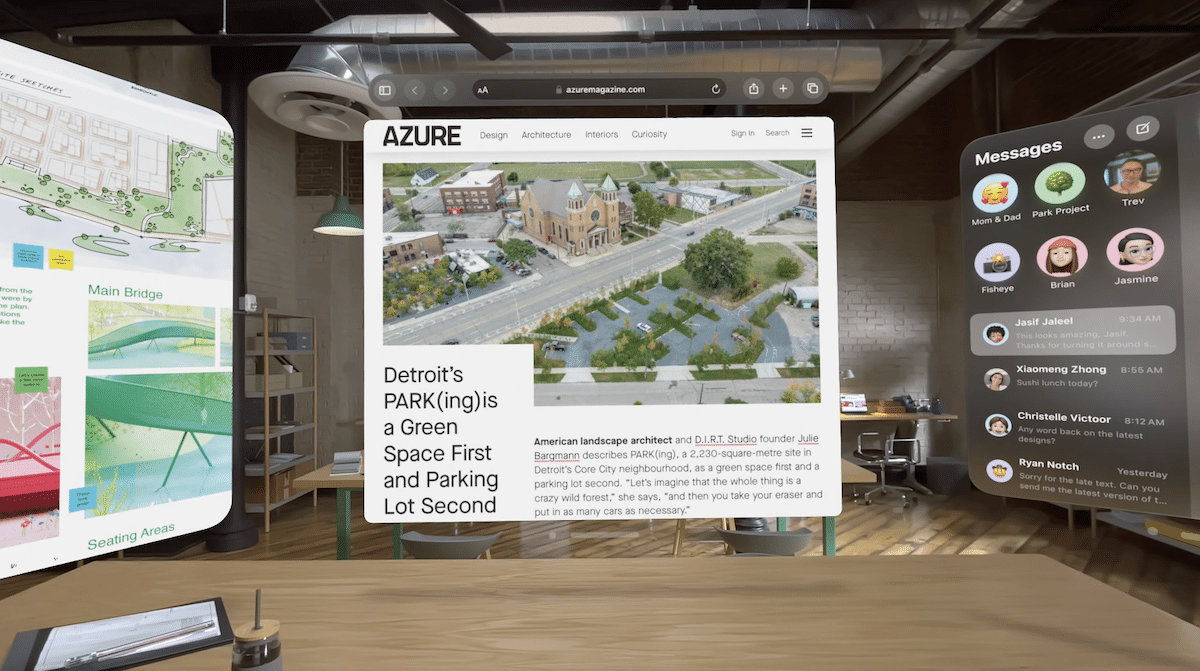
Apps and app ecosystem
The current app ecosystem for the Vision Pro has been described as limited, with notable absences including Netflix and Spotify. While optimized apps are available, reviewers express reservations about the overall selection and anticipate future updates to enhance the app library. As highlighted by The Verge’s Nilay Patel:
Speaking of gaming, there aren’t any real VR games or fitness apps here — there’s nothing like Beat Saber or Red Matter or Population: One, all hit games on the Quest.
[…]
Yet, there’s just nothing like that on the Vision Pro at launch, even though Apple is so focused on fitness and health across its other devices. I think it’s because the Vision Pro just doesn’t seem suited to those kinds of physical game experiences — it’s heavy, with that external battery, and it’s hard to see how some of these games would even work without controllers.
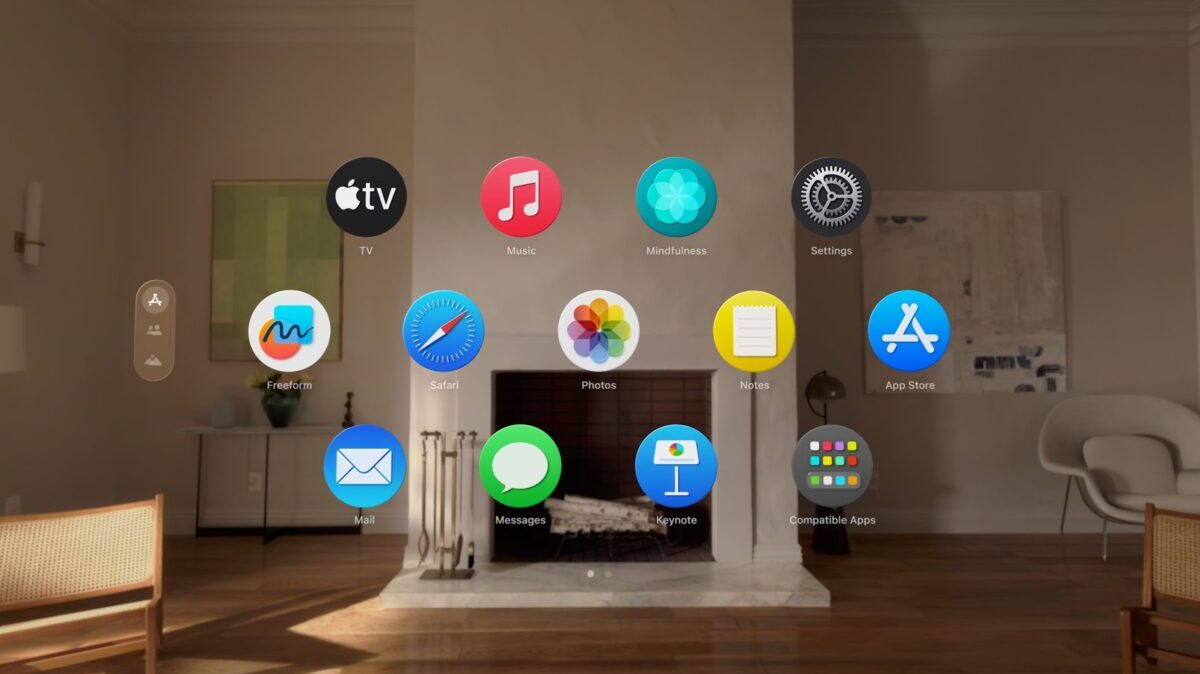
Price and overall verdict
With a hefty price tag of $3,499, the Vision Pro has been deemed expensive by reviewers. Despite acknowledging its technological advancements, the consensus among reviewers is that the device is not a necessary purchase for the average consumer at this point. Concerns about battery life, weight, and the need for additional accessories contribute to the overall mixed verdict. Mark Spoonauer from Tom’s Guide said the following:
So what’s not to like about the Vision Pro? The super expensive price is a big one, as it will greatly limit this headset’s initial appeal. Some may want to wait for the rumored lower-cost version on the horizon, but there’s no timetable for that.
Conclusion
The Apple Vision Pro presents a groundbreaking venture into mixed reality, offering a blend of impressive features and notable drawbacks. As the tech community awaits its official release, it’s clear that the Vision Pro represents the future of computing but may need refinements in subsequent generations to address current limitations and become more accessible to a broader audience.
Check out some video reviews below:







